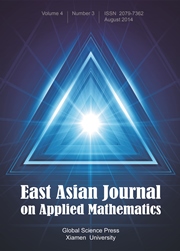Crossref Citations
This article has been cited by the following publications. This list is generated based on data provided by Crossref.
Wen, Ruiping
Wu, Ruihuan
and
Guan, Jinrui
2018.
Some generalizations of the new SOR-like method for solving symmetric saddle-point problems.
Journal of Inequalities and Applications,
Vol. 2018,
Issue. 1,
Wen, Ruiping
Li, Shuzhen
and
Duan, Yonghong
2019.
A semi-smoothing augmented Lagrange multiplier algorithm for low-rank Toeplitz matrix completion.
Journal of Inequalities and Applications,
Vol. 2019,
Issue. 1,

